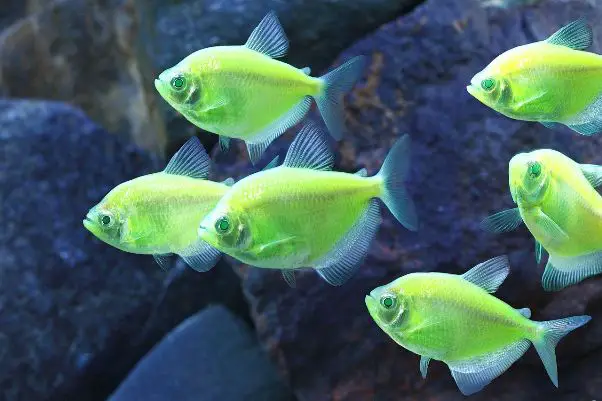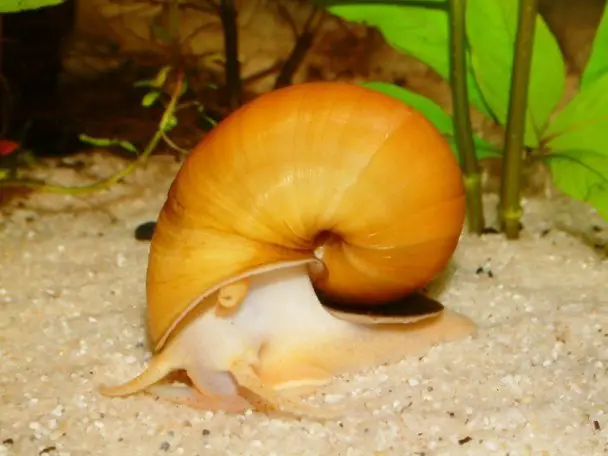New killifish from Cameroon
A new species of the genus Aphyosemion has been described in the journal ‘Zootaxa’. Continue reading »
Category: New Species, News | Tags: Aphyosemion, aquarium, fishkeeping, killifish, Zootaxa | Comment »
A new species of the genus Aphyosemion has been described in the journal ‘Zootaxa’. Continue reading »
Category: New Species, News | Tags: Aphyosemion, aquarium, fishkeeping, killifish, Zootaxa | Comment »
The Aquarium of Brussels is a hidden gem in the Belgian capital…
In contrast to our usual waffle this experiment blog post is going to be heavy on photos and low on word count, so let’s see how it goes.
While visiting Belgium a couple of weeks ago I was lucky enough to spend an enjoyable few hours at the wonderfully impressive Aquarium of Brussels.
It’s possibly the cleanest such set up I’ve ever seen, and puts many zoos and larger ‘chain’-style public aquaria to shame.
Cooler still, the vast majority of installations are dedicated to freshwater fish and amphibians with a number of rare and endangered species among them.
They also have an off-public area which is equally as spotless as the main displays and lots more endangered fish are being bred and raised there.
A few pics should help illustrate what I’m talking about…
Ptychochromis oligacanthus from Madagascar:
Bedotia sp. ‘Namorona’ is an undescribed (and huge!) species restricted to parts of the Namorona River, also in Madagascar. The zoo are having trouble breeding these so any tips would be much appreciated.
Malagasy display with Bedotia sp. ‘Namorona’, the killifish Pachypanchax sakaramyi and Ptychochromis oligacanthus.
Fundulopanchax display – great to see killis getting some attention.
Iberian ribbed newt, Pleurodeles waltl. These are being bred in quite large numbers behind the scenes…
…speaking of which. Here’s one of the ‘backstage’ area tanks with the goodeid Ilyodon furcidens.
Goodeids, newts and poison frogs, all breeding at the aquarium.
More Ptychochromis oligacanthus. The tank itself is interesting as like all of those at the aquarium it’s made of a type of marine wood with a glass front panel.
Young cichlids growing on.
Quarantine for future display fish.
Breeding and raising tanks for endangered species containing the Corfu killifishValencia letourneuxi, various cichlids, Melanotaenia spp., goodeids, etc.
This area must require as much upkeep as the display area to maintain these standards and the whole set-up is a massive credit to the managers and staff.
Back in the main aquarium, this display contained endangered goodeids.
Finally, a lovely little paludarium housing a breeding population of the Oriental fire-bellied toad, Bombina orientalis plus some White Cloud Mountain minnows in the water.
Aside from the standard of husbandry and attention to detail on display there were other things to admire here.
For example, this is a relatively small, low budget project funded by the Belgian National Lottery, yet is Brussels’ only public aquarium and on a Saturday afternoon was busy with a number of larger kids’ groups inside.
The aquarium offer audio tours in several languages which offer information about the various animals on display including the reasons why they are being maintained in the case of endangered species, while kids are able to undertake a series of activities on the way round.
Some of these involve ticking off the species on display, or even drawing them, and it was the first time I’d heard young children talking excitedly about goodeids in a public aquarium, for example.
Since the majority of such aquaria in the world tend to feature an identical series of displays (coral reef, clown fish, ray touch pool, shark tunnel, piranhas, Amazon display, rinse, repeat) this modest yet inspiring place is well worth a visit.
It was brilliant to see a focus on freshwater rather than marine species given that the ongoing environmental crisis affecting their habitats around the planet continues to be largely ignored by conservation groups and mainstream media alike.
Matt Ford
Aquarium of Brussels home page: http://www.aquariologie.be/
Category: Articles, Conservation | Tags: aquarium, Aquarium de Bruxelles, Brussels, conservation, freshwater, goodeid, killifish | 2 comments »
Flourescent fishes have been around for a number of years now although all the ones known to date, such as the infamous ‘Glofish’, have been genetically-modified in order to produce flourescence.
The proteins used to produce these glowing creatures have previously been extracted from microbes, jellyfishes and corals, in which they occur naturally, and have also been used to tag proteins or to track how genes are expressed.
Japanese scientists have now identified the first such protein in a vertebrate, and their results are preliminarily published online in the journal ‘Cell’ this week.
The Japanese eel, Anguilla japonica, is a freshwater species with a migratory lifestyle similar to that of the European and American eels Anguilla anguilla and Anguilla rostrata and a popular food fish in Japan where it’s known as ‘unagi’, a word familiar with lovers of sushi.

Other ‘glowing’ fishes, such as these Gymnocorymbus ternetzi, are produced by genetic modification © glofish.com
In 2009 foodf scientists Seiichi Hayashi and Yoshifumi Toda were investigating how lipids are transported into the oily eel flesh when they found that the eel’s muscle tissue glowed green when blue light is shone on it.
They isolated a few fragments of the protein responsible which was studied further by molecular biologist Atsushi Miyawaki and his team who have identified the gene that codes for the molecule, naming it ‘UnaG’.
The new gene is unusual in a number of ways including the fact that it flouresces even under low oxygen levels, plus the fact it does so only in the presence of a molecule called molecule called bilirubin, a breakdown product of haemoglobin which has been used in hospital tests for years.
For further information refer to the full article: Kumagai, A., R. Ando, H. Miyatake, P. Greimel, T. Kobayashi, Y. Hirabayashi, T. Shimogori and A. Miyawaki. 2013. A Bilirubin-Inducible Fluorescent Protein from Eel Muscle. Cell 10.1016/j.cell.2013.05.038
Category: Blogs, Discoveries | Tags: Anguilla, eel, flourescent, unagi | Comment »
A huge thanks to all that participated in our mini survey this week!
This exercise has been incredibly useful – the depth of feedback received far exceeded our expectations and has offered genuine food for thought in terms of deciding where we go next.
We’ll reveal the results, textual abuse sustained, and of course announce our trio of Amazonas subscription winners very soon.
Thanks again
The SF Team (Team SF?)
Category: Uncategorized | Tags: aquarium, fish, seriously fish | 2 comments »

Apple snails are now banned from the European aquatic trade after becoming established in Spain © Polarlys
Apple snails of the genus Pomacea have been popular aquarium inhabitants for decades but were recently banned from the European trade following a request from Spanish authorities due to one species, P. insularum, becoming established in certain wetlands following release by aquarists.
The congener P. canaliculata has been introduced to Hawaii and various countries in Southeast Asia where it’s considered a highly invasive pest since it not only competes with native molluscs but feeds on aquatic plants and can devastate rice and other semi-aquatic crops.
It’s considered one of the 100 world’s worst invaders, according to the Global Invasive Species Database.
New research published in the open access journal PLoS ONE this week has revealed that the eggs of P. canaliculata are filled with a powerful neurotoxin making them unpalatable to virtually all potential predators with the only known exception being the fire ant, Solenopsis geminata, although no-one is quite sure how it’s able to eat them.

Two invasive species together at a habitat in China; bright pink Pomacea eggs with the African aquatic plant Pistia stratiotes © Shan Lv
Apple snail eggs are unusual anyway insofar that they’re brightly-coloured, pink-reddish in the case of P. canaliculata, and deposited outside of the water, characters that not only make them visible but also vulnerable to both predators and parasites.
The bright colour is thought to act as a visual deterrent to predators while a study published in 2010 revealed that proteins deposited around a fertilised egg, within the perivitelline fluid, are involved in egg defence.
One of these proteins, PcPV2, is a neurotoxin with a strong lethal effect on the central nervous system of mice and the new research demonstrates that this substance is pretty unusual in a number of ways.
For example its structure is of a type known as ‘AB toxins’ which were previously known only in certain bacteria and plants, and represents the first record of a defense system employed by plants against predators in an animal.

To date the tropical fire ant is the only species able to eat Pomacea eggs without ill effects © Antweb.org
AB toxins tend to be ingested orally and can remain active after passing through the gastrointestinal tract of higher animals where extremes of pH restrict the activity of some other types of toxin.
This suggests that the protein evolved in order to confer a survival advantage to the eggs and has resulted in a virtual absence of predators as well as pointing towards previously unknown similarities between toxic plant seeds and poisonous eggs.
It may also provide clues as to why apple snails are able to colonise new habitats so successfully, and raises inevitable questions regarding the role of the aquarium trade in facilitating some of these introductions.
For further information refer to the full, open access paper: Dreon, M. S., M. V. Frassa, M. Ceolín, S. Ituarte, J-W. Qiu, J. Sun, P. E. Fernández and H. Heras. 2013. Novel Animal Defenses against Predation: A Snail Egg Neurotoxin Combining Lectin and Pore-Forming Chains That Resembles Plant Defense and Bacteria Attack Toxins. PLoS ONE 8(5): e63782
Category: Aquatic Invertebrates, Blogs | Tags: Apple snail, aquarium, invasive species, PLoS ONE, Pomacea | One comment »
In the second part of an interview with Paul Jepson from the University of Oxford, Will Darwall, Head of the IUCN Freshwater Biodiversity Unit, suggests that formation of a single, unified group of scientists and conservationists may help give voice to the crisis affecting the planet’s freshwaters. Continue reading »
Category: Conservation, News | Tags: aquarium, biodiversity, conservation, fish, IUCN, water and biodiversity, Will Darwall | 2 comments »
Product reviewers wanted
Are you still looking for product reviewers?
19th Dec 2024
Product reviewers wanted
Hey! Interesting article!
17th Dec 2024
Site improvements
Got it! Thanks for the update. It's good to know that Seriously Fish is working on improving the site's performance and addressing the email and forum...
21st Nov 2024
Responsive design
Nice
13th Nov 2024
Responsive design
it is a complete malfunctioning horror on iphone and ipad.
10th Nov 2024